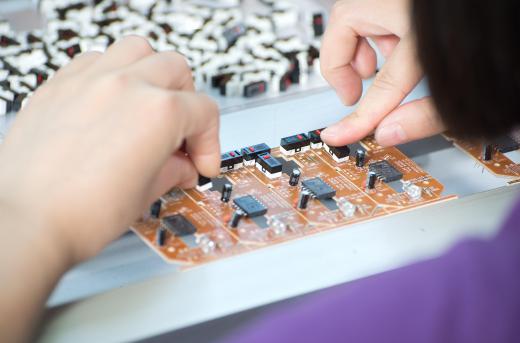An in-circuit test is a test that makes sure there are no shorts, resistances or other problems with printed circuit boards (PCBs). It is intended to ensure proper manufacturing and quality in PCBs. The most common in-circuit test method is the bed-of-nails test, in which the PCB is pressed against a panel of connection pins so the pins can check for any electrical problems. There are press-down and vacuum-seal bed-of-nails testers, with vacuum generally considered better but also much more expensive. While this test can help manufacturers test for PCB problems, there are limitations, such as faulty master designs; contacts also cannot be quality tested.
Many electrical components need to work simultaneously and as a team to make a PCB function. During the manufacturing process, several problems can occur that would keep a PCB from functioning. The machines putting the PCB together may malfunction, or some of the smaller components may be faulty. To check for circuit functionality, an in-circuit test is performed.

The most common way of performing an in-circuit test is by placing the PCB on a device called a bed of nails, so called because it uses many electrical contact pins that together look like a bed of nails. To initiate the test, a PCB is placed on the device. The contacts then push power through the PCB to check for problems such as shorts, resistances or breaks in the circuit.
Bed-of-nails devices are categorized by how they secure the PCB to the contacts. In the push-down method, the PCB is just pushed against the nails to make contact. The vacuum version uses a vacuum seal to suck the PCB into the contacts. These two are both adept at performing an in-circuit test, but the vacuum version is more efficient and the push-down method is cheaper. Both versions tend to leave small marks in the tested PCB, but this does not affect functionality.
Performing an in-circuit test will assist manufacturers in finding defects with PCBs, but the process is not infallible. While in-circuit testing can test the circuit to ensure power runs correctly through the PCB and that all the circuit parts are functioning, it cannot test the PCB contacts, which may keep the PCB from working in a computer. If the PCB design itself is faulty or prone to easily breaking, this also can cause problems, because the test can only ensure the circuit design is functioning, not how durable it will be.
